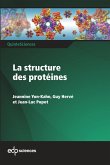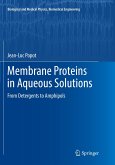

Broschiertes Buch
From Detergents to Amphipols
Softcover reprint of the original 1st edition 2018
1. Februar 2019
Springer / Springer International Publishing / Springer, Berlin
978-3-030-10324-8
| Gebundenes Buch | 162,99 € | |
| eBook, PDF | 129,95 € |
Gebundenes Buch
From Detergents to Amphipols
1st edition 2018
21. Juni 2018
Springer / Springer International Publishing / Springer, Berlin
978-3-319-73146-9
eBook, PDF
8. Juni 2018
Springer International Publishing
Ähnliche Artikel


eBook, PDF
1. September 2012
EDP Sciences






0,00 €
Sofort per Download lieferbar
eBook, PDF
11. Februar 2021
EDP Sciences


Ähnlichkeitssuche: Fact®Finder von OMIKRON
